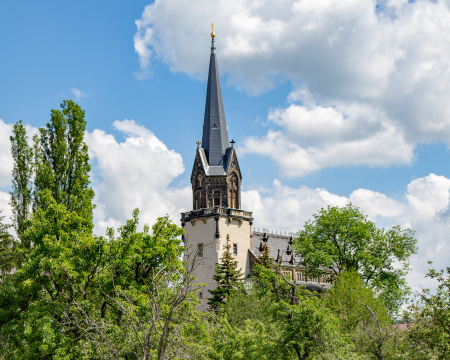Church of Peace
The first document about a building in Radebeul, the church in Kötzschenbroda, dates back to 1273. A predecessor to the current church, which was probably built in the 12th century, fell victim to destruction by the Hussites in 1429.
Only the chancel with the three Gothic windows and the tower up to the parapet above the clock remain today from the new late Gothic building, which was begun in 1477 and consecrated in 1510. The Reformation was introduced in Kötzschenbroda in 1539. The church was badly damaged in the village fire of 1558. During the pillaging of the village by Swedish troops in the Thirty Years' War, it was almost completely destroyed again in 1637. Thanks to the generous support of Elector Johann Georg I, reconstruction in the Renaissance style could begin in the same year and was completed in 1656. During this construction phase, the church received four bells, a new clock and an organ. Due to the strong growth of the congregation and the increasing dilapidation of the church, the decision was made in 1882 to extensively remodel the church, giving it its current appearance.
The name Peace Church, which has been in use since 1935, goes back to the armistice treaty signed between Saxony and Sweden in the nearby vicarage in 1645, which has been commemorated by a memorial room in the lower tower of the church since 1995. The treaty ended the 30 Years' War for Saxony.
This might also interest you:
>> Treasures from the city archive
>> Town history
>> Histories
| Friedenskriche Parish Radebeul | |
| Altkötzschenbroda | |
| 01445 Radebeul | |
| +49 351 8381741 | |
| http://www.friedenskirchgemeinde-radebeul.de |


